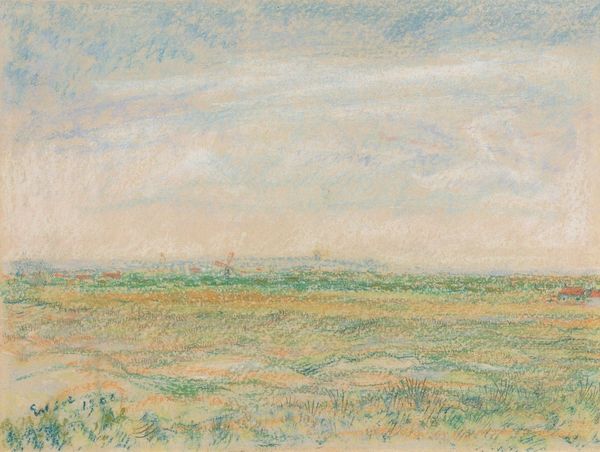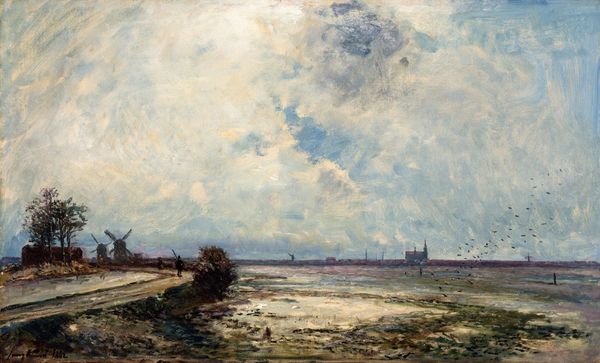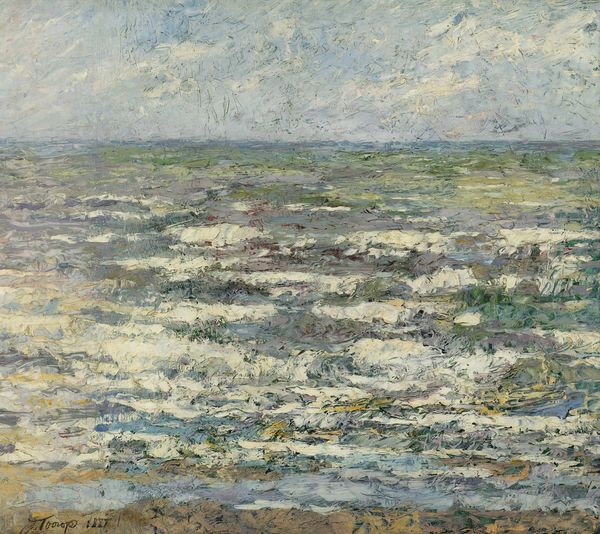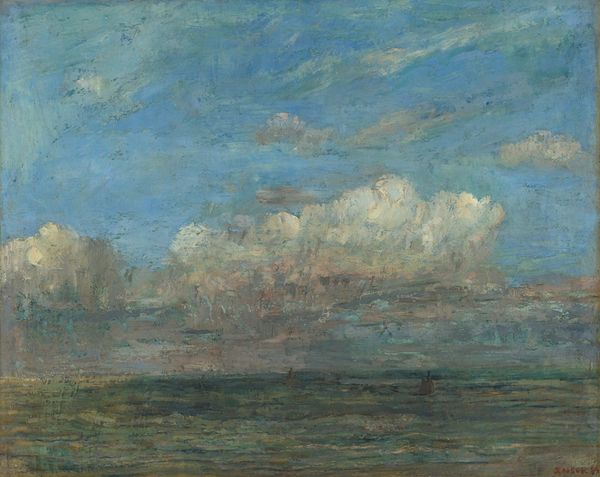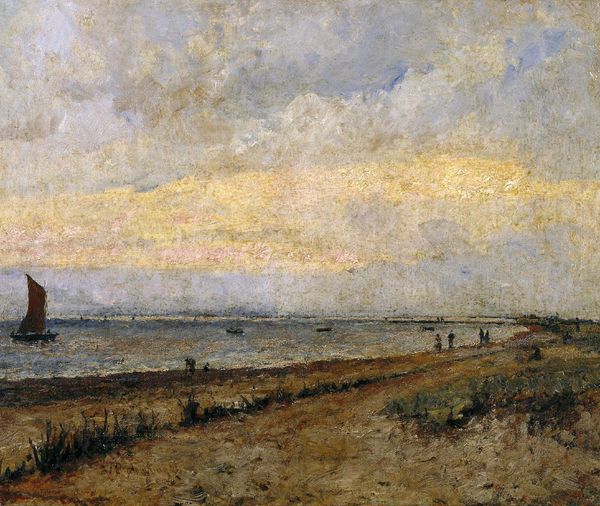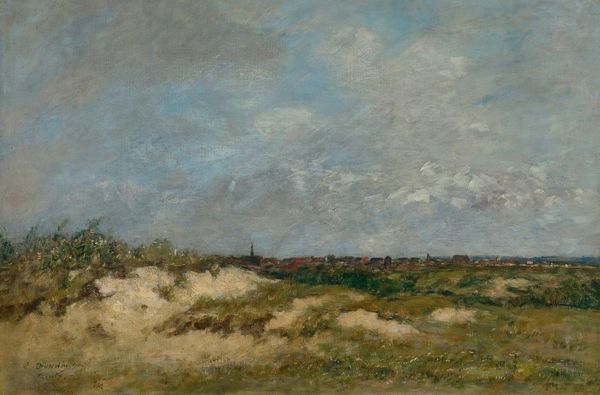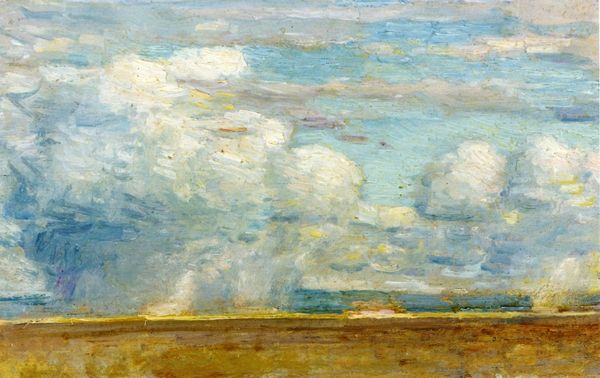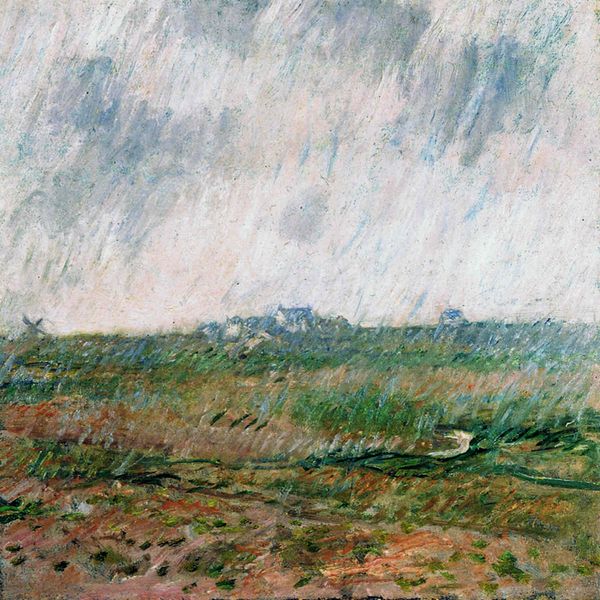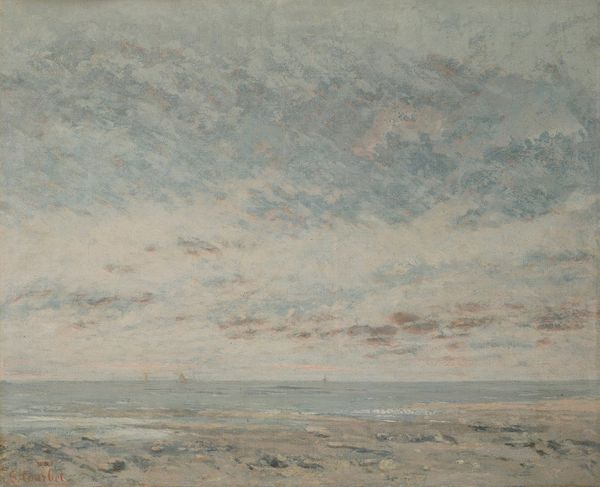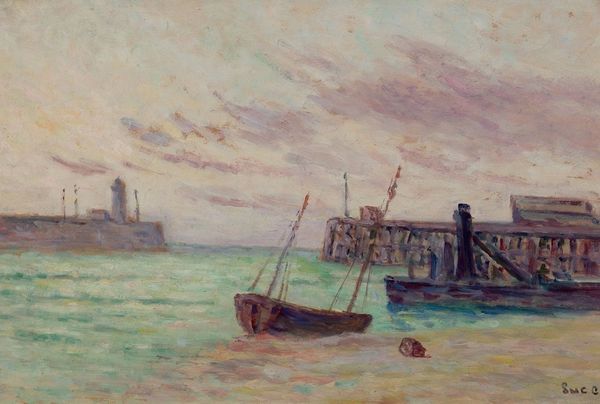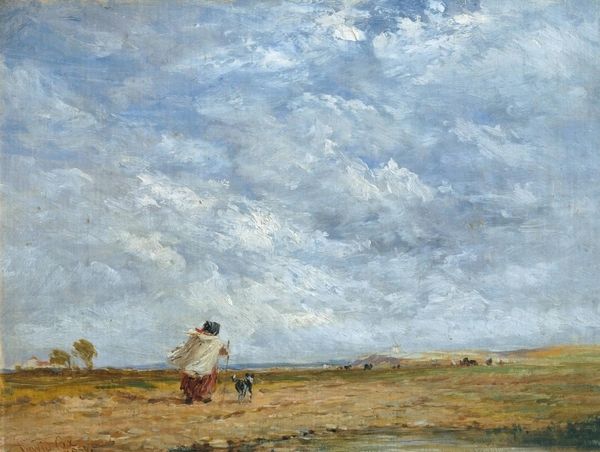
painting, plein-air, watercolor
#
water colours
#
painting
#
impressionism
#
plein-air
#
landscape
#
oil painting
#
watercolor
#
watercolor
Copyright: Public Domain: Artvee
James Ensor painted “Les Deux Moulins” using oil on canvas in his native Belgium, though the exact date remains unknown. The windmills are the focal point, representing a traditional, rural past. It’s important to consider that Ensor was painting during a period of rapid industrialization in Belgium. The country was becoming an economic powerhouse, but this came at a cost. Industrial growth often led to social inequality. The image also creates meaning through its composition and color palette. The windmills are set against a flat, open landscape. This evokes a sense of spaciousness but may also hint at feelings of isolation. Ensor was known for his avant-garde approach to art, and it’s worth considering how his work might critique the art establishment of his time. Understanding an artwork like this requires archival research into the socio-political context. This helps us understand how art is a product of its time, reflecting the values, conflicts, and anxieties of the society in which it was created.
Comments
No comments
Be the first to comment and join the conversation on the ultimate creative platform.
